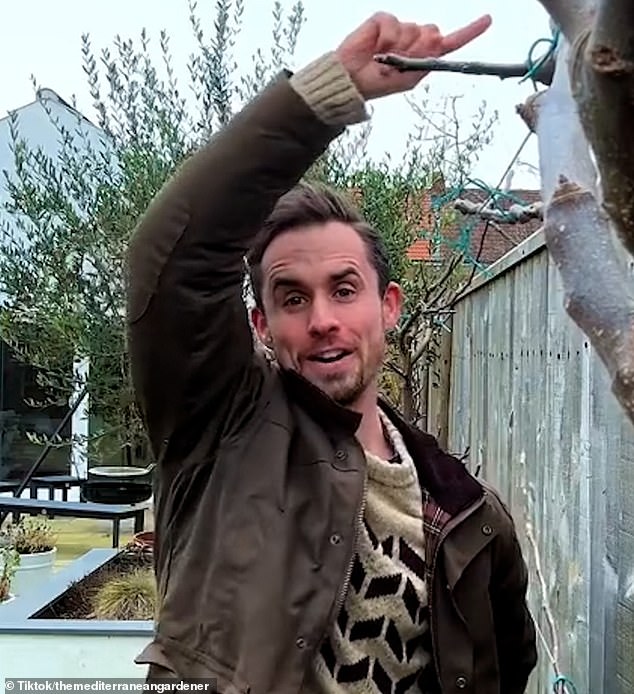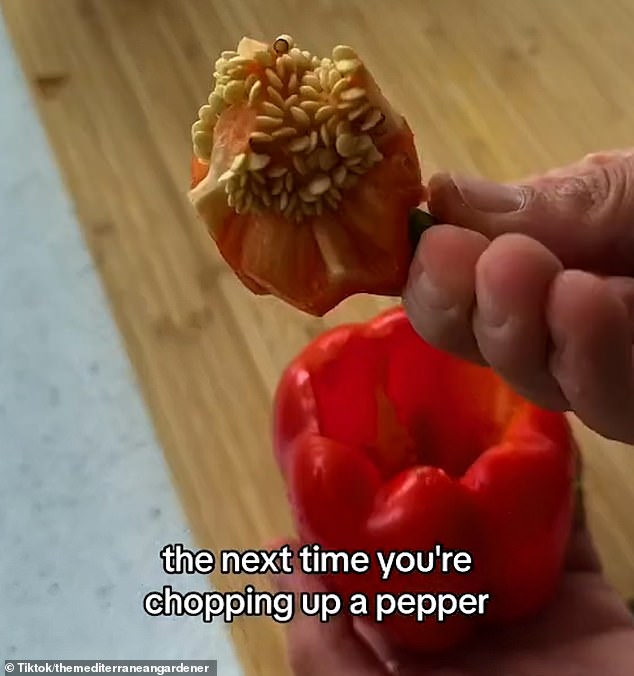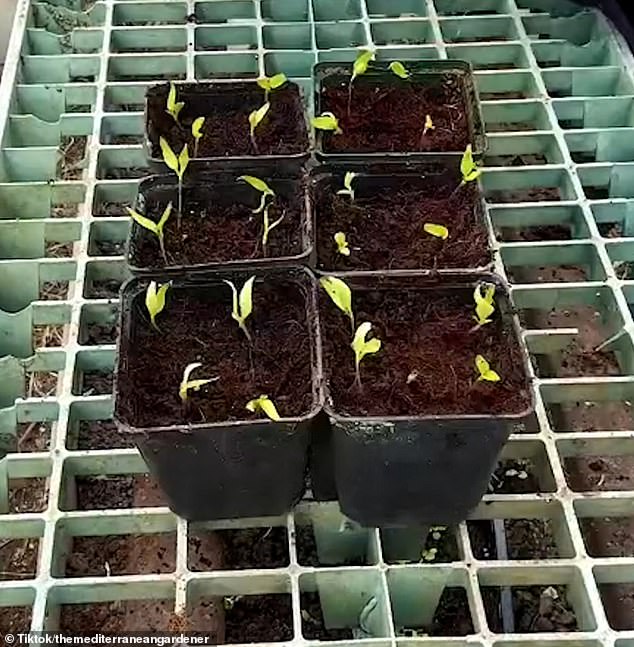Table of Contents
<!–
<!–
<!– <!–
<!–
<!–
<!–
With spring just around the corner, now is the time to fill your garden with vegetables and plants.
There’s also no need to travel to the nearest garden store to get your garden going – you can use leftover items in your fridge.
Gardening expert Michael Griffiths from Bath has taken to TikTok to share how food waste can be saved, reused and transformed into flowering plants.
Here, FEMAIL takes a look at the three steps you can take to transform the pepper seeds in your refrigerator into flowering vegetables in your garden…

Gardening expert Michael Griffiths (pictured) revealed how you can grow your own peppers for FREE in just three steps


The gardening professional encouraged viewers to save pepper seeds the next time they prepare a meal, so they can grow more in their garden.
1. REMOVE THE SEEDS
According to the gardening professional, the time to plant pepper seeds is approaching, and you may already have them at home.
Although you can usually buy peppers at the supermarket with a meal in mind, such as fajitas, you can also use them to grow more.
“Now is the time to grow pepper plants and you can use the ones you have in your refrigerator,” Michael told his more than 200,000 TikTok followers.
Instructing viewers to save the seeds, he said: “Next time you cut a pepper, scrape the seeds from the placenta and set them aside.”
2. MAKE A MINI GREEN HOUSE
Creating a mini greenhouse may seem like a complicated process, but it is actually quite simple.
But once you’ve set the pepper seeds aside, it’s essential to create the best habitat for them to begin their journey.
To do this, simply take a small plastic box, like a to-go container, and fill it with moist compost, according to the gardener.
He then advises viewers to sprinkle the pepper seeds on the soil before covering them with some compost.
To complete the mini greenhouse, close the lid of the box and leave them in a warm, sunny place in your house for a few weeks.


Before transferring the seedlings to a larger pot (pictured), green-thumbed hopefuls should place the seeds along with soil in a plastic container and let them develop in a warm, sunny area for a few weeks.
3. MOVE THEM TO A BIGGER BOX
Once the seedlings have reached five to six centimeters in height, they are ready to be transplanted into larger pots containing all-purpose compost.
Michael transferred about four seedlings per large black pot in his back garden.
Doing this means your vegetables won’t become “pot bound” and will have plenty of room to grow freely, depending on Gardeners world.
The publication advises starting to nourish vegetables with liquid feed rich in potassium, such as fertilizer for tomatoes, when flowers begin to appear on the plant.
If the weather conditions are a little drier, you should gently spray warm water to ensure a better crop grows.
It is advisable to continue watering the plant during this process, however you should avoid adding too much water and drowning them.
Once the peppers have reached the expected size and color, you will need to harvest them.

